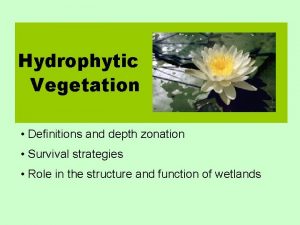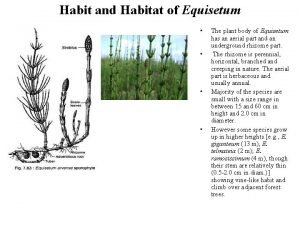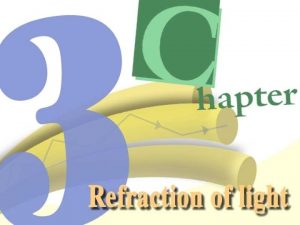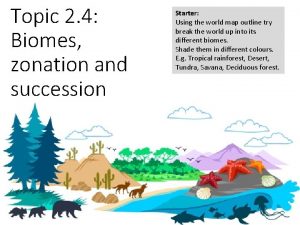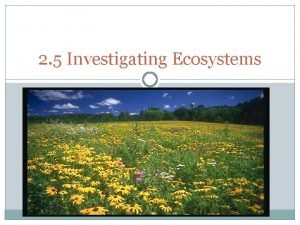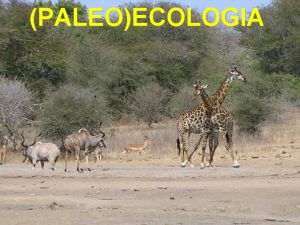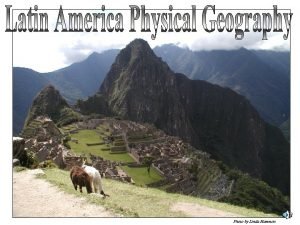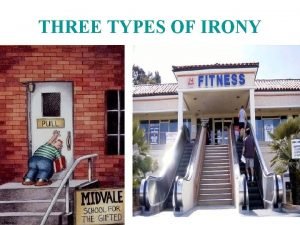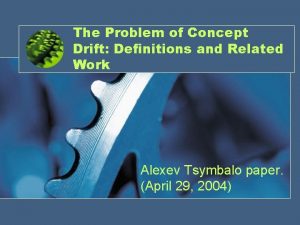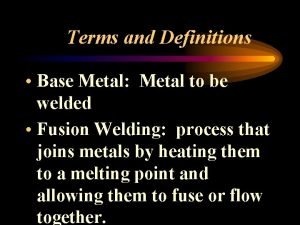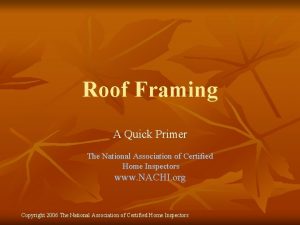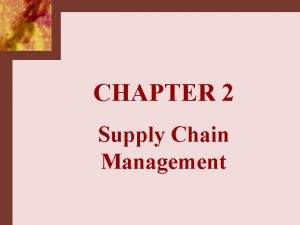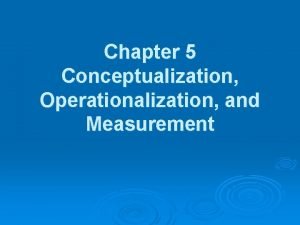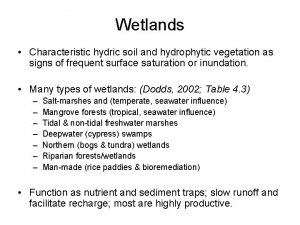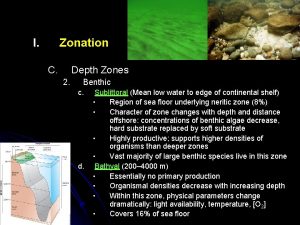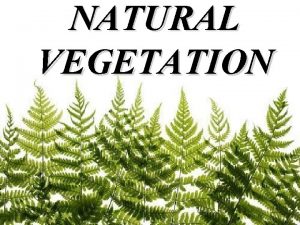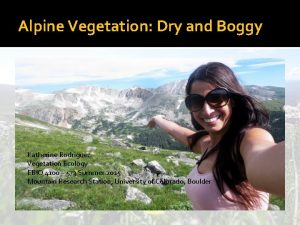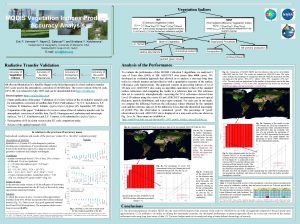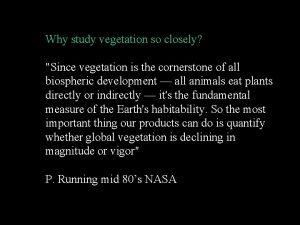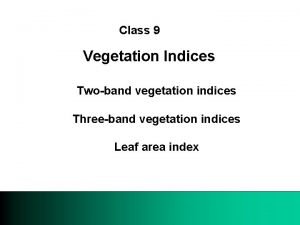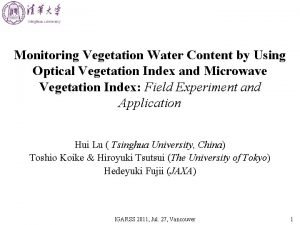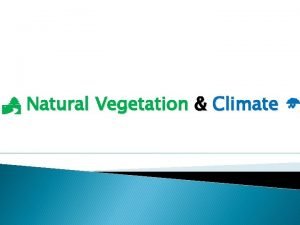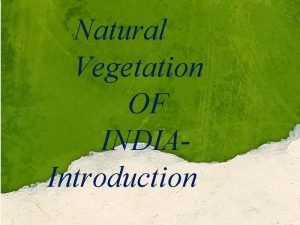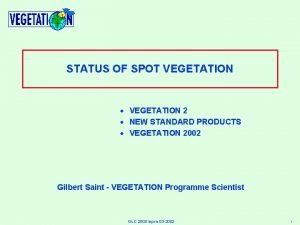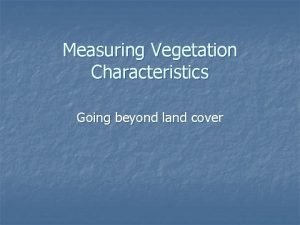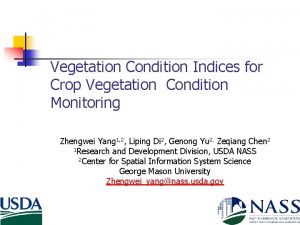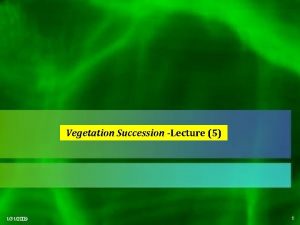Hydrophytic Vegetation Definitions and depth zonation Survival strategies




























- Slides: 28

Hydrophytic Vegetation • Definitions and depth zonation • Survival strategies • Role in the structure and function of wetlands

Hydrophytes “Any macrophyte that grows in water or on a substrate that is at least periodically deficient in oxygen as a result of excessive water content; plants typically found in wet habitats. ²” drier wetter The presence of hydrophytes is one of three elements comprising the definition of a wetland. 2. Wetland Training Institute 1987. Field Guide for Wetland Delineation, Corps of Engineers Manual

Evolution of Aquatic Plants Unlike aquatic microflora, they are not “true children of the water”. “Their ancestors came out of the water and were transformed into aerial organisms, then individual members of these groups re-adapted to return to the water”. ³ 3. Ruttner, Franz 1963. Fundamentals of Limnology, Univ. of Toronto Press. p. 179.

Structural Groups Free-floating Emergent Floating-leaf Submersed

Structural Groups Emergents Plants whose roots and basal portions grow beneath the surface of shallow water but whose leaves and stems are born primarily in the air. Examples include bulrush, cattails, arrowhead, rushes, sedges, and many shoreline plants. Depths -0. 5 m - 1. 5 m Image from University of Florida Aquatic, Wetland Invasive Plant Information Retrieval System

Structural Groups Plants whose leaves float on the water’s surface but their roots are anchored in the substrate. Depths 0. 5 m - 3 m Floating-Leaf

Structural Groups Free Floating Plants that float with most of their body above the water’s surface. Roots, if present, hang free in the water. Depths variable but restricted to nonturbulent, protected areas. Water Hyacinth Image from Univ. of Florida

Structural Groups Submersed Plants that spend their entire life cycle, with the possible exception of flowering, beneath the surface of the water. Depths to 10 m Hydrilla

Overview Part II. Strategies for life under water: 1. Oxygen exchange 2. Photosynthesis 3. Obtaining nutrients 4. Structural support

Oxygen Exchange “…as far as hydrophytes are concerned, oxygen is a rare and precious commodity. ” Agnes Arber, 1920 Water Plants

Oxygen Exchange, continued • Cells in root tissue respire, in terrestrial plants oxygen is obtained from air spaces in the soil. • Although oxygen may be present in the water column, respiration by aquatic biota and by soil organisms, together with slow diffusion of oxygen in water, results in anoxic conditions in the soil • In obligate anaerobes, anoxia leads to cell death in 24 hours

Oxygen Suppy Strategies of Vascular Plants, cont. • Structural adaptations a. Aerenchyma b. Special organs or responses i. Adventitious roots ii. Stem elongation iii. Lenticels iv. Pneumatophores c. Pressurized gas flow • Physiological adaptations a. Anaerobic respiration b. Malate production

Adventitious roots Photo from Rolf Kyburz Gaussia spirituana (palm growing on coral reef)

Pneumatophores From www. nhmi. org Bill Keogh, Photographer

Lenticels www. pssc. ttu. edu/pss 1411 cd/PLANTID/ glossary/glossary. htm Pear tree

Oxygen Exchange Aerenchyma Large intercellular structures (pore spaces) which extend throughout the entire plant and allow for the storage and transport of gas to the submerged roots. aka Lacunae Image from University of Florida Aquatic, Wetland Invasive Plant Information Retrieval System

more on aerenchyma…. . • Development of aerenchyma in individual plants stimulated by flooding • Formed by increased cellulase activity (cell lysis) or cell separation in cortex • Pore space in submerged portions of plant as high as 60% (compared to 7% in terrestrial plants)

Jussiaea peruviana (tropical) A. mud roots (m. r. ) and the adventitous roots (a. r. ) B. Transverse section of submerged part of a stem to show aerenchyma (a) which develops from the phellogen (pg). Also shown is the phloem (ph), normal cambium (c), xylem (xy). From Arber, Agnes 1920 Water Plants. Cambridge University Press. Water Plants, p. 190.

Oxygen Exchange Emergent and floating plants obtain oxygen directly from the atmosphere through stomata on the leaves. Passive diffusion of oxygen along a concentration gradient Reverse flow due to concentration gradient of CO 2 and CH 4 Figure from Brix, H. 1993. Macrophyte-Mediated Oxygen Transfer in Weltands: Transport Mechanisms and Rates in Constructed Wetlands for Water Quality Improvement, Moshiri, ed. p. 393.

Oxygen Exchange Convective flow of gas in water lilies. Pressurized gas transport is induced by humidity and thermal gradients. Figure from Brix, H. 1993. Macrophyte-Mediated Oxygen Transfer in Weltands: Transport Mechanisms and Rates in Constructed Wetlands for Water Quality Improvement, Moshiri, ed. p. 394.

Responses to Flooding Increased sensitivity to gibberellic acid Ethylene buildup Cellulase activity Petiole cell elongation Initiation of adventitous roots Increased aerenchyma Leaves reach surface Ethylene dissipates

Oxygen Exchange Submersed plants must obtain dissolved oxygen from the water. Leaves have high surface area to volume ratio, cuticle is absent Eurasian watermilfoil Image from Univ. of Florida O 2

Photosynthesis • Submersed plants have their photosynthetic maximum at lower light levels (ca. 15% full sun or less) • Light intensity is believed to be the limiting factor in determining the maximum depth at which an aquatic plant can survive (although for rooted plants it could be gas transport) • Compensation depth - where respiration exactly equals photosynthesis (species specific)

Photosynthesis • Not all submersed species are equally adapted to low light: Elodea densa optimum at 107 lux (0. 3% full sun) whereas Heteranthera dubia optimum at 6350 lux (18%) • Accessory pigments allow for high variability in spectral preferences : Elodea densa died under light 480 -630 nm (yellow-green) whereas Heteranthera dubia grew 3 times greater.

Getting Carbon for Photosynthesis CO 2 Emergents, floating leaved CO 2 + H 2 O H 2 CO 3 H+ + HCO 3 - H+ + CO 32 - All submersed Some submersed use both

Obtaining Nutrients In rooted aquatic plants nutrient absorption is primarily through the roots.

Obtaining Nutrients Some foliar uptake may occur, especially in waters with high nutrient concentrations. Submersed Plants

Free floating macrophytes obtain nutrients directly from the water through foliar absorption and through water roots. The unrooted macroalga Chara absorbs P equally well in all parts (Littlefield and Forsberg 1965) Image from Univ. of Florida Chara
 Hydrophytic vegetation
Hydrophytic vegetation Habit of plant
Habit of plant State of survival survival of the fittest tweak
State of survival survival of the fittest tweak State of survival survival of the fittest stages
State of survival survival of the fittest stages Real depth and apparent depth
Real depth and apparent depth S shape curve
S shape curve Zonation and succession
Zonation and succession Parasitism
Parasitism What is zonation
What is zonation Zona oseanik
Zona oseanik Mioceno inferior
Mioceno inferior Linda hammon
Linda hammon Stabilizing selection
Stabilizing selection David lewis survival and identity
David lewis survival and identity Apip adalah
Apip adalah Necessary life functions and survival needs
Necessary life functions and survival needs Dramatic irony in the crucible
Dramatic irony in the crucible The problem of concept drift: definitions and related work
The problem of concept drift: definitions and related work Safety terms and definitions
Safety terms and definitions Framing terms and definitions
Framing terms and definitions Revision materials
Revision materials Hatchet vocabulary 1-3
Hatchet vocabulary 1-3 Example of proximity news
Example of proximity news Comparison and contrast definition
Comparison and contrast definition Cscmp meaning
Cscmp meaning Undefined terms definition
Undefined terms definition What is serongagandi in music
What is serongagandi in music Film genres and definitions
Film genres and definitions Nominal and operational definitions
Nominal and operational definitions
